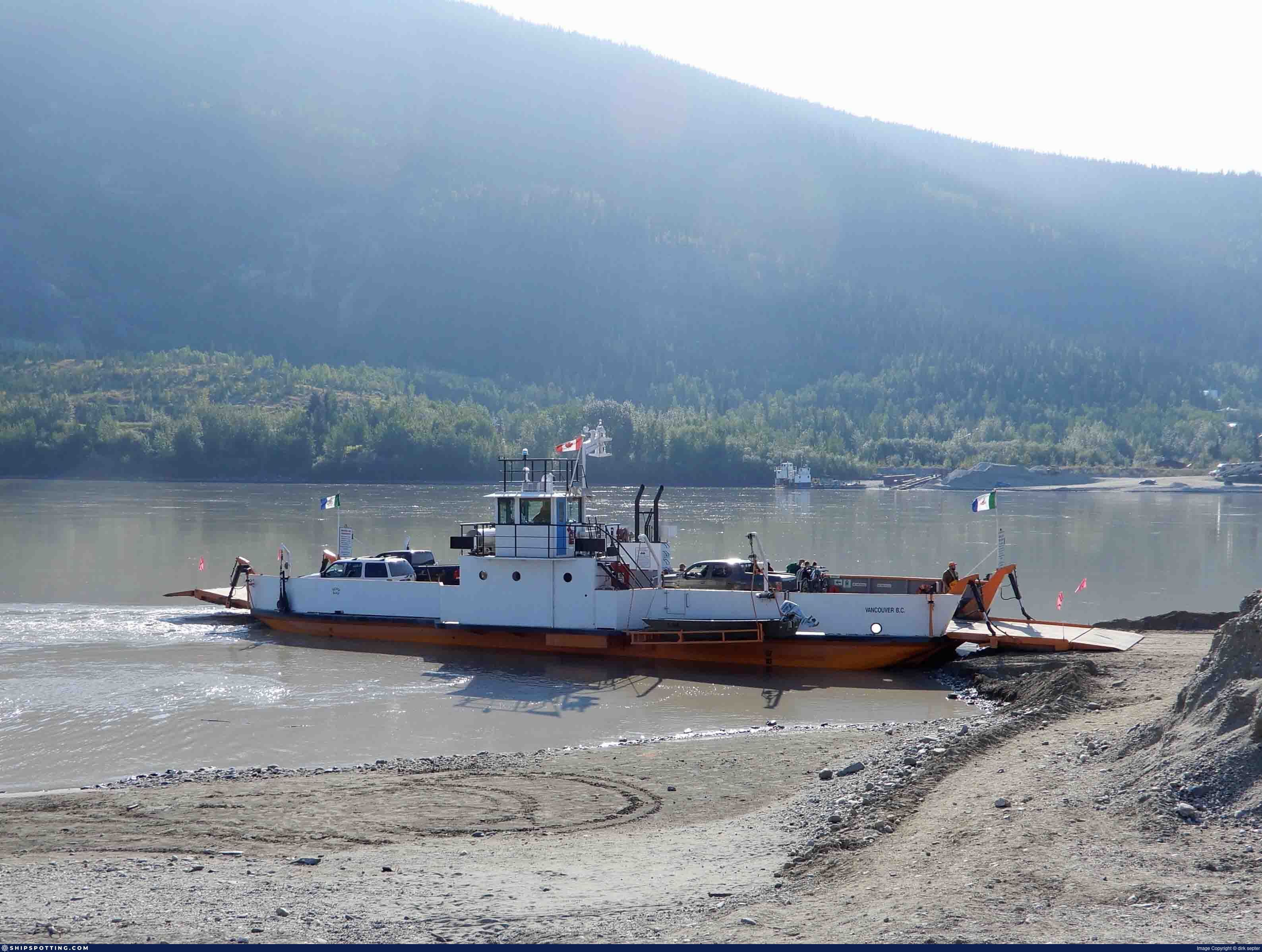
WELCOME TO SHIPSPOTTING.COM
George Black
Photo
details
Description:
Dawson City, Yukon Territory; July 31, 2018;
O.N.: 328870;
George Black has been transporting people and vehicles across the Yukon River
at Dawson City, Yukon Territory since 1967;
this ferry service crosses the Yukon River and provides access to the
Top of the World Highway from the North Klondike Highway for motorists
passing through Dawson City. this free service runs 24 hours per day except Friday
mornings, when it is shut down for servicing between 5 a.m. and 7 a.m.;
built 1967 by Allied Shipbuilders Ltd., Vancouver, BC; (Hull no. 159);
vessel was cut into 10 sections and shipped to Whitehorse, Yukon Territory;
the sections arrived on White Pass & Yukon Route flatcars in late April 1967;
five weeks later the vessel was launched at Whitehorse;
L x B x D: 16.15 x 10.06 x 1.80 m; 105.75 gt.;
owner: Government of Yukon, Whitehorse, YT
(no IMO, so inland ferry, moved by editor)
Vessel
particulars
There is no Ship Data available for this photo!
Would you like to suggest new Ship Data?
Photo
Categories
This ship is not assigned to any other category.




COMMENT THIS PHOTO(7)
Edit
comment
In the 1911 federal election he was H.H. Stevens' campaign manager, and was rewarded by the government of Robert Laird Borden by being appointed to the position of Commissioner of the Yukon. As Commissioner from 1912 to 1915, he tried to bring in legislation to protect miners, loggers and others who worked for companies that went bankrupt.
During World War I, Black recruited a regiment from the Yukon to fight in the war. He became the company's Captain, and was wounded in combat.
Following the war, he settled in British Columbia in 1919, and ran unsuccessfully for a seat in the Legislative Assembly of British Columbia.
He first won a seat in Parliament in the 1921 election as a Conservative, representing Yukon. As a Member of Parliament (MP), he introduced legislation to give Yukoners the right to trial by jury and to protect mining titles.
After the Tories won the 1930 election, the new Prime Minister of Canada, R.B. Bennett, nominated Black to be Speaker of the House of Commons of Canada. As Speaker, he kept a .22 caliber pistol in his chambers which he used to shoot rabbits on Parliament Hill. Black's personal and financial life were strained during the Great Depression and he had a nervous breakdown. He was committed to the Westminster Veterans Hospital in London, Ontario for 6 months. Being unavailable to preside over the final session of the 17th Parliament, he resigned prior to its commencement in January 1935. Since Black was unfit to run in the 1935 election his wife, Martha Black, ran in his place as an "Independent Conservative". She held the seat, becoming the second woman elected to the House of Commons (the first being Agnes Macphail), and the first American-born woman to do so.
Black was released from hospital in July 1935, and moved to Vancouver to recuperate. Martha stepped aside, and allowed Black to run for the Yukon seat in the 1940 election. In the 1945 election the Liberal riding association was concerned that Communist union organizer Tom McEwen of the Labor-Progressive Party could win the election and opted not to run a candidate in Yukon riding and instead supported Black against the Communists and the Co-operative Commonwealth Federation. The local unions supported McEwen and the LPP's platform of support for collective bargaining, family allowance, old age pensions, workers’ compensation and equality for "Indians and Eskimos."[1] Black campaigned on a more left wing platform, promising collective bargaining, minimum wages, maximum-hour and minimum-age laws, paid holidays, unemployment insurance and labour representation on government boards and defeated McEwan by a margin of 162 votes.[2] He remained in Parliament until the 1949 election, which he did not contest. He attempted to recapture his seat in the 1953 election but was unsuccessful.
References
Edit
comment
Edit
comment
Edit
comment
www.youtube.com/watch?v=6yTUzwS2oZI
Edit
comment
Edit
comment
Edit
comment